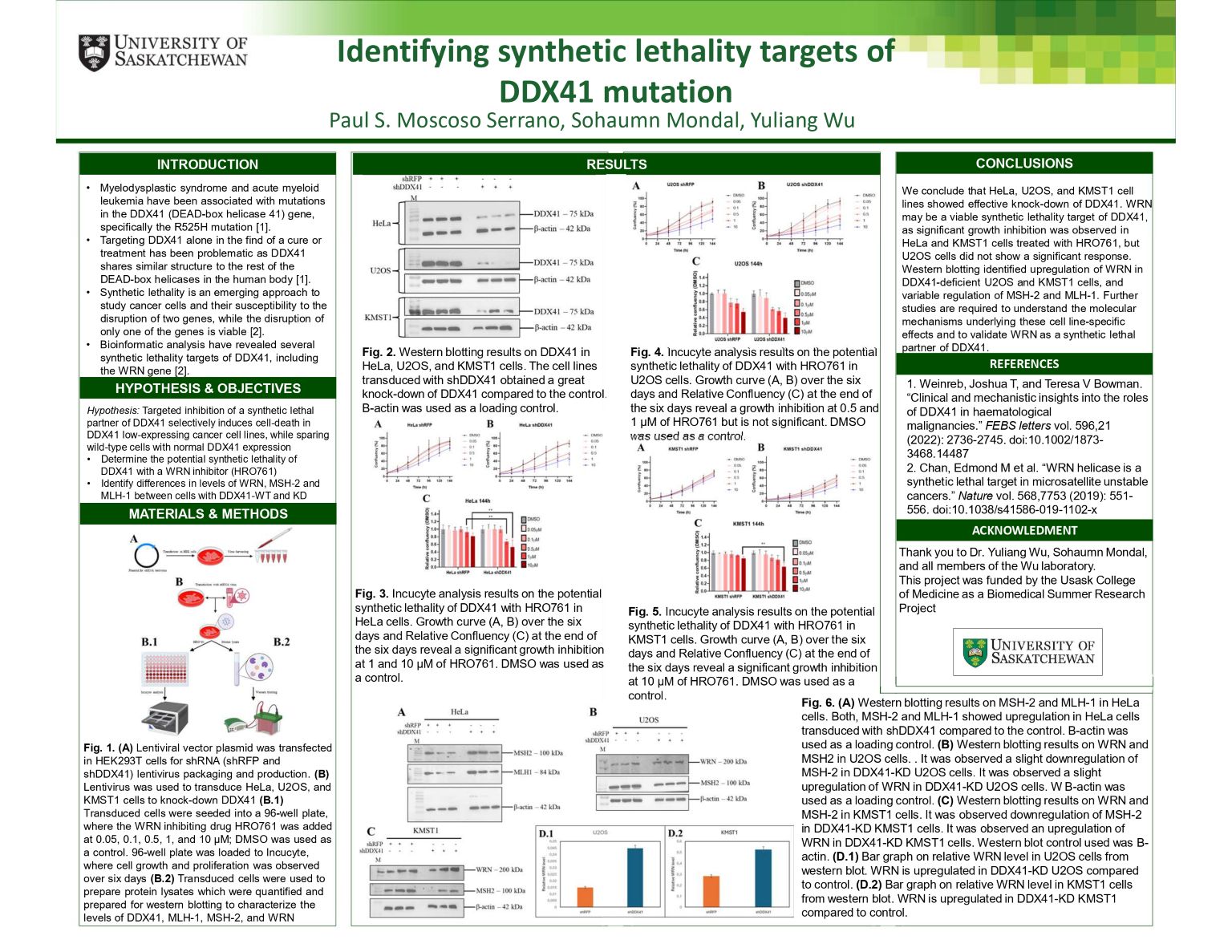
Identifying synthetic lethality targets of DDX41 mutation
Paul Sebastian Moscoso Serrano
Patients with myelodysplastic syndrome and acute myeloid leukemia have been associated with mutations in the DDX41 (DEAD-box helicase 41) gene, specifically the R525H mutation. One strategy was to find a cure related to the DDX41 mutant protein; however, this presented a challenge, as DDX41 shares a similar structure with other DEAD box helicases present in the human body. Here, synthetic lethality (SL) is implemented as a potential solution, as it does not directly target the gene of interest. Bioinformatic analyses have found various SL targets of DDX41, including the WRN gene. To evaluate the inactivation of WRN in DDX41-deficient cells, a shRNA virus was prepared to infect HeLa, U2OS, and KMST1 cells, and knock-down (KD) the expression of DDX41. These cells were then treated with a WRN inhibitory drug, HRO761, at different concentrations. Cell growth and proliferation of these cells were controlled over six days. It was found that HRO761 inhibited the growth of DDX41-KD cells compared to DDX41 wild-type. It was also observed that depletion of DDX41 affected in the levels of markers from the mismatch repair system, such as MSH-2 and MLH-1. Future assessment of this strategy includes determining the molecular mechanisms behind the SL interaction presented.
